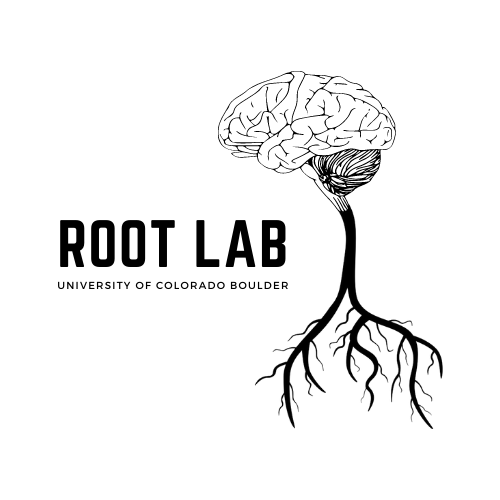Congratulations to Annie Ly, who was chosen for the 2023-24 recipient of the Dosier/Muenzinger Predoctoral Research Fellowship Award from the Department of Psychology and Neuroscience at CU Boulder!
Root lab receives grant from the Institute of Cannabis Research
Thanks to the Colorado Institute of Cannabis Research, we’re excited to investigate how specific VTA cell-types are involved in cannabis abuse. See more here
Manuscript published in European Journal of Neuroscience!
Congratulations to Annie Ly and team on their publication of Bed nucleus of the stria terminalis GABA neurons are necessary for changes in foraging behaviour following an innate threat
check it out here
Manuscript published in Neuropsychopharmacology
Our manuscript on a subset of VTA glutamate neurons that expresses the mu opioid receptor and participates in opioid-seeking behavior is now published in Neuropsychopharmacology! Check it out here
Dr. Dillon McGovern selected for NIH OSNAP Award!
Congratulations to Dr. Dillon McGovern who was selected for the 2023 NIH Outstanding Scholars in Neuroscience Award!
Emily Prevost selected for Neuroscience Scholar Associate!
Congratulations to Emily Prevost who was selected as an Associate to the Society for Neuroscience Scholars program!
Dr. Dillon McGovern defends his dissertion!
We are all so proud! Congratulations to Dr. Dillon McGovern!
New Pre-Print: Monosynaptic inputs to ventral tegmental area glutamate and GABA co- transmitting neurons
Congratulations to Emily Prevost and team on their pre-print Monosynaptic inputs to ventral tegmental area glutamate and GABA co-transmitting neurons. This work has been ongoing since we started the lab in 2018, which led us to develop SHARCQ for use here.
While the overall circuits of GABA-releasing or glutamate-releasing VTA neurons have been identified, the circuits of neurons that co-transmit glutamate and GABA are unknown. We used INTRSECT vectors, rabies tracing, and SHARCQ to identify the brainwide inputs to these co-transmitting neurons. Large numbers of inputs came from lateral hypothalamus and superior colliculus while the most dense inputs came from lateral habenula, dorsal raphe, and locally in the VTA. We hypothesized most inputs were glutamatergic and indeed found that lateral hypothalamus glutamate neurons as well as superior colliculus glutamate neurons functional activate VTA glutamate and GABA co-transmitting neurons. Activation of each neuron resulted in different behaviors related to threat interpretation but these behaviors did not correlate with VTA activity. We hypothesize that VTA glutamate and GABA co-transmitting neurons receive a general signal of threat via these pathways that does not involve the movements underlying the reaction to those threats. Finally, we supported that these neurons act as outcome detectors and the identified circuits here may be a mechanism by which they integrate information related to the detection and processing of motivationally-salient outcomes.
Check out the paper here
Annie Ly is awarded F31 Predoctoral Fellowship from NIMH!
Congratulations to Annie on her F31 Award!!
New Pre-Print: BNST GABA neurons are necessary for changes in foraging behavior following an innate threat
Congratulations to Annie Ly and team for their manuscript investigating the role of BNST GABA neurons in changes in foraging behavior in response to robotic or innate threat.
Annie adapted a robotic threat foraging paradigm from rats to mice. After that, she introduced a robotic threat or live predator threat while BNST GABA neurons were inhibited. Then she examined how these mice foraged in the subsequent absence of threat. Both threats impeded ongoing foraging. However, live predator threat impeded foraging in the subsequent absence of threat more than the robotic threat. Further, the changes in foraging behavior were blocked by previous inhibition of BNST GABA neurons during live predator threat, but not robotic threat. These results suggest BNST GABA neurons play a role in developing a hypervigilant state in response to a previous highly threatening situation.
See the pre-print here, now in peer review.











